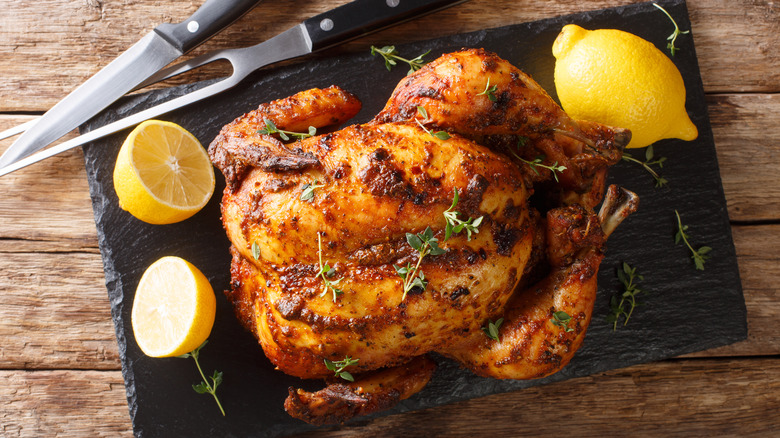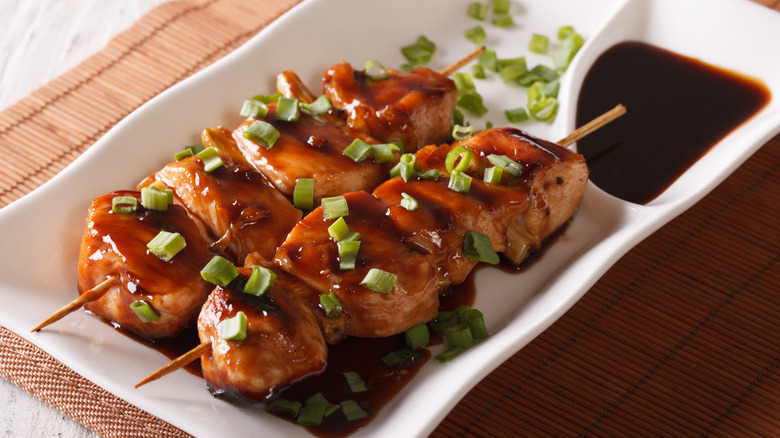The Coveted Chicken Meat You've Probably Never Heard Of
For many, there's nothing more versatile, cozy, and useful than a perfectly roasted chicken. It's an easy dish to master, needing nothing more than a liberal sprinkle of salt and pepper and a rub down in any kind of fat to be something delicious. You can change up the flavor profile with your selection of aromatics and spices to suit your mood –– going French with herbs de Provence and some white wine or Chinese with five spice powder and Shaoxing wine. Plus, Meghan Markle made Ina Garten's perfect roast chicken recipe the night Prince Harry proposed, so if you're looking for that engagement ring, run and get yourself a chicken.
A roasted chicken is affordable. According to How Much Is It, a whole, non-organic chicken is around 75 cents to $1.50 per pound. Considering a five-pound roasting chicken will cost around $10, it's an inexpensive way to feed a family or have really amazing leftovers. All that leftover chicken can be used for chicken salad sandwiches, soup, chicken pot pie, barbecue chicken sandwiches – we could go on. The carcass is also great and shouldn't be wasted; simmer the carcass to create a perfect chicken stock for soup or chicken and dumplings.
But a lot of us are missing the most prime piece of chicken meat, it seems.
Have you heard of a chicken oyster
It's called the chicken oyster, and it's coveted among professional chefs and home cooks alike. Because of its hidden location, the meat is often thrown away with the rest of the carcass – a grievous error. According to Mark Bittman, the French call these two morsels of meat "sot-l'y-laisse," or, roughly, "the part that only a fool leaves behind." Because genuinely, only a fool would leave these juicy pieces of chicken behind. They're a specialty in Japanese yakitori spots, where they're seasoned with salt and sake and cooked over coals on skewers, per Sunday's Grocery.
So, the next time you roast a chicken, let it rest. Remove the legs, delicately remove the breasts, and then turn the bird over. Located near where the thigh connects to the rest of the bird, on either side of the spine, are two pieces of dark meat, about the size of an oyster. As the chicken roasts, the oysters basically get confited in the roasting juices and whatever fat you used to baste your chicken with. As the chicken rests, the juices resettle into the meat, and the oysters retain their plumpness, per Kitchen Sanity. The result is two pieces of dark, juicy meat, and they're just for you – a chef's treat.

